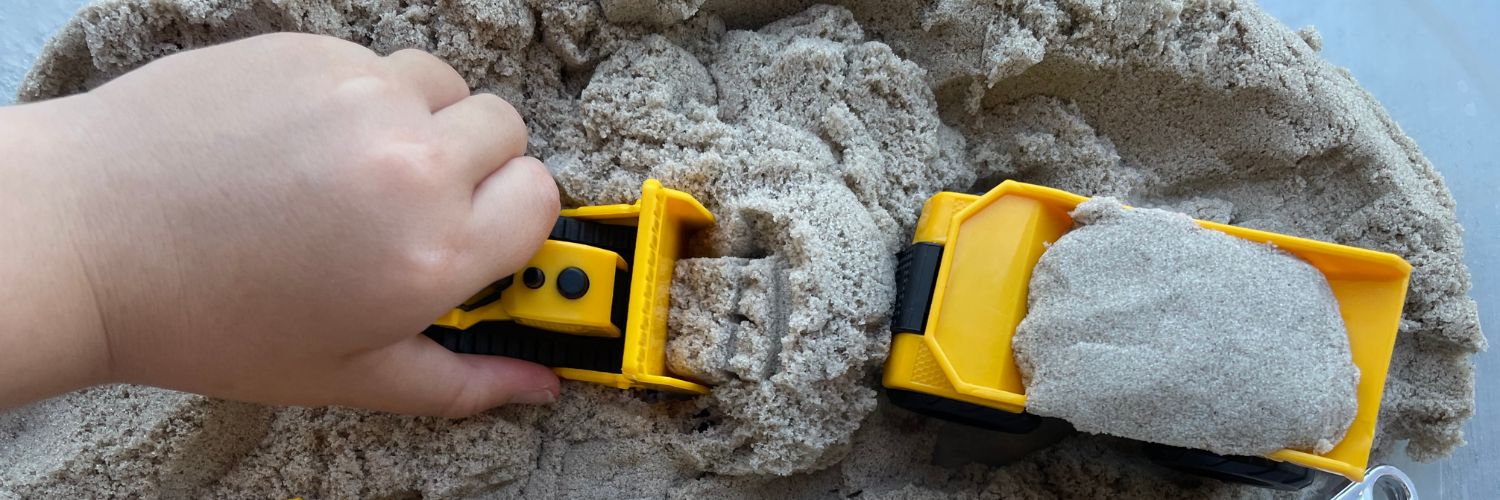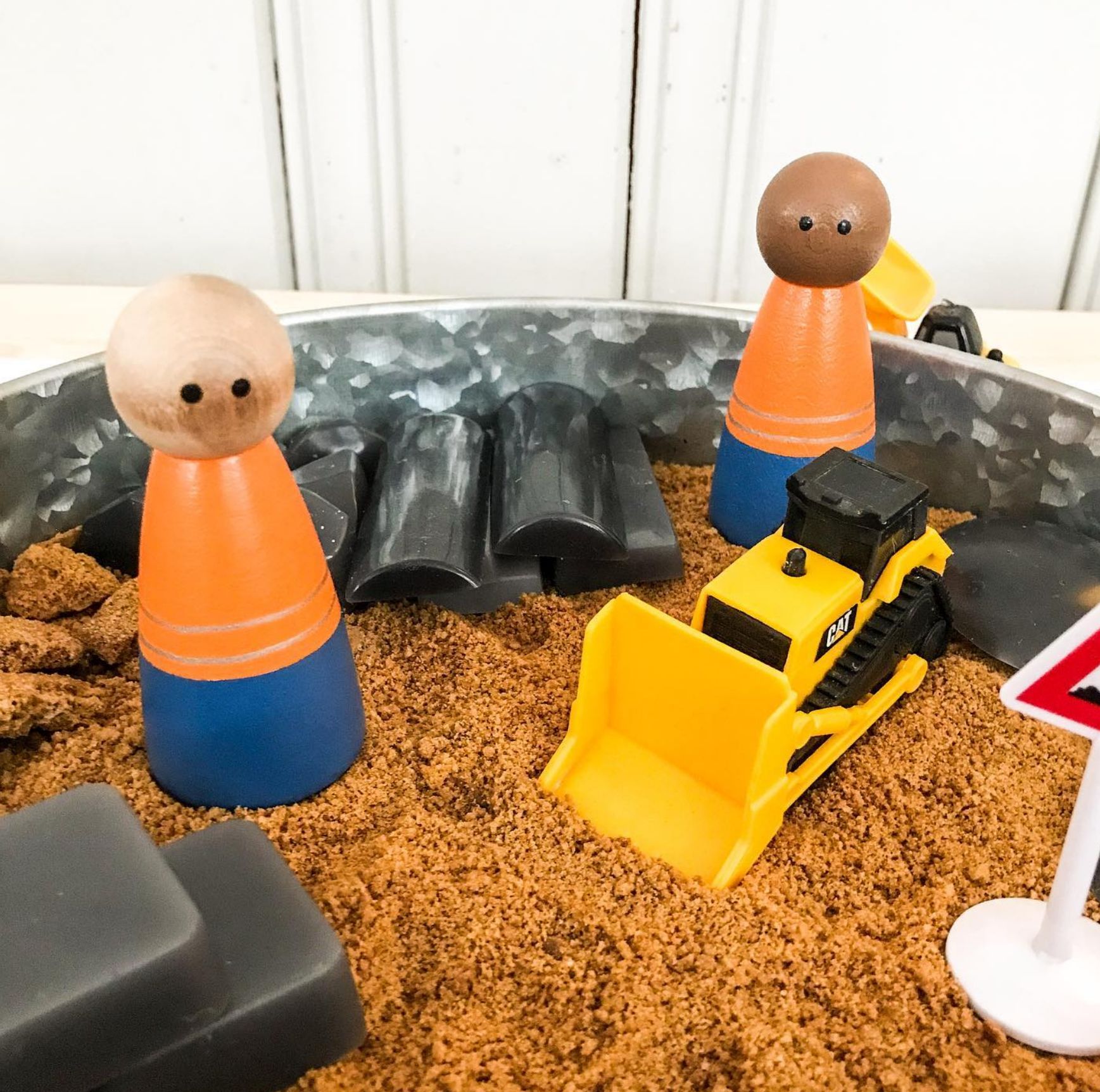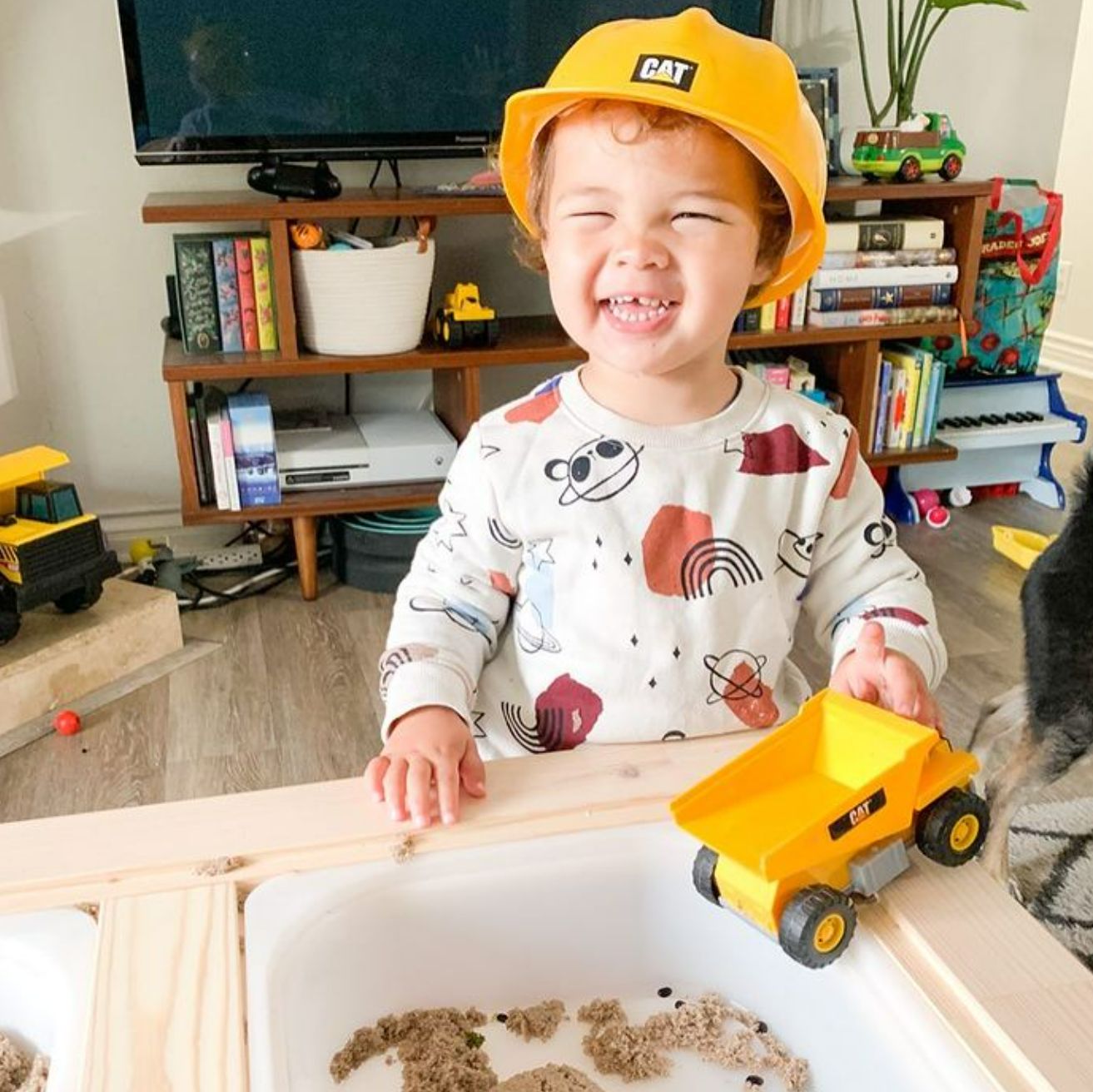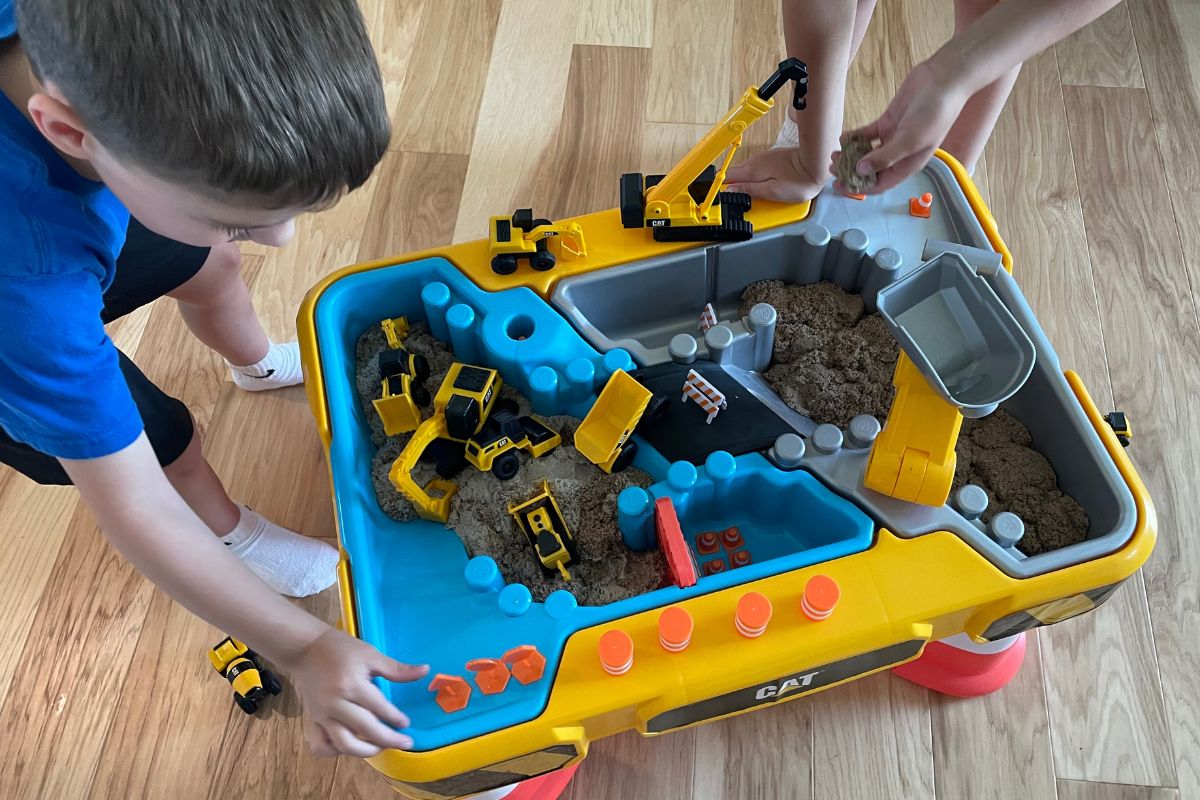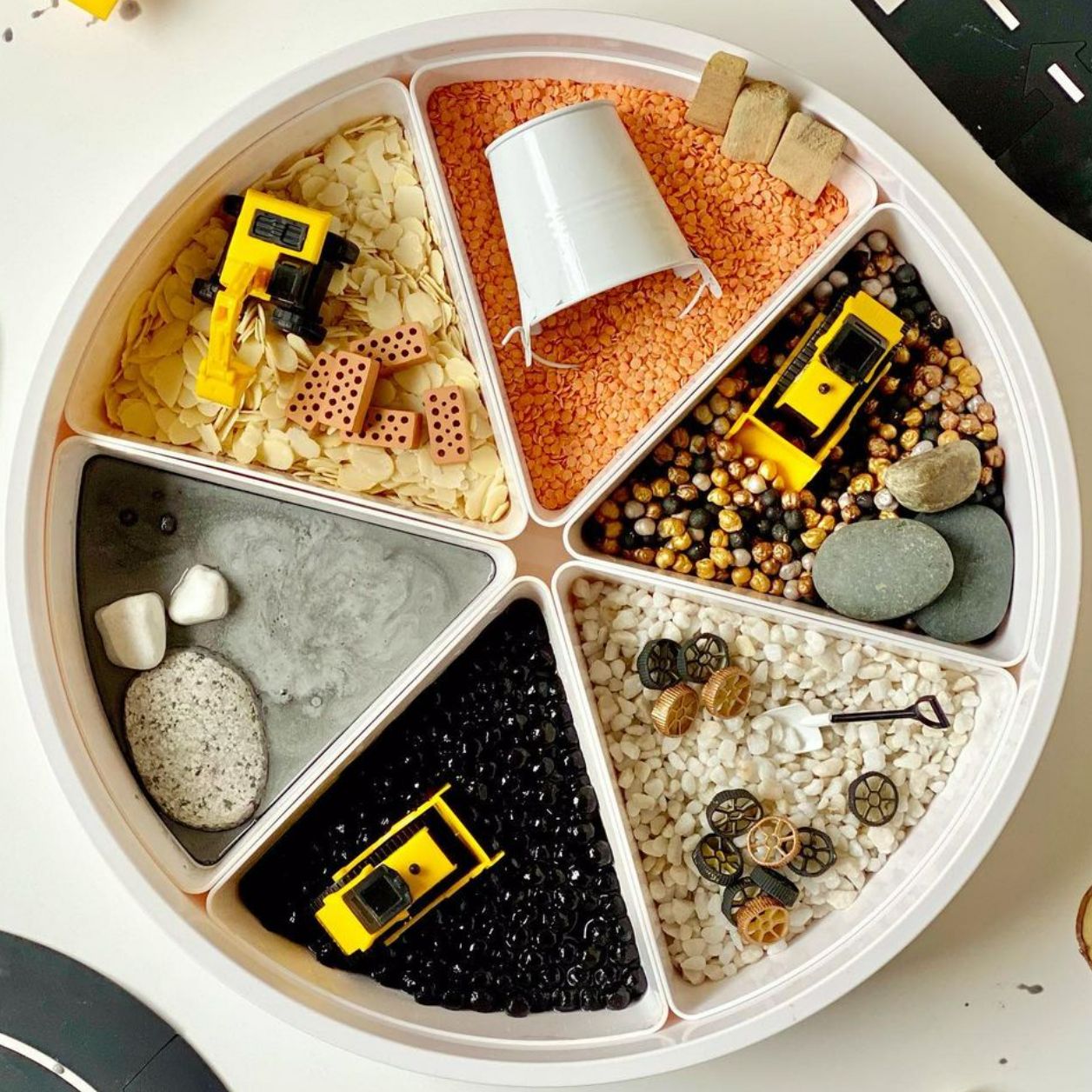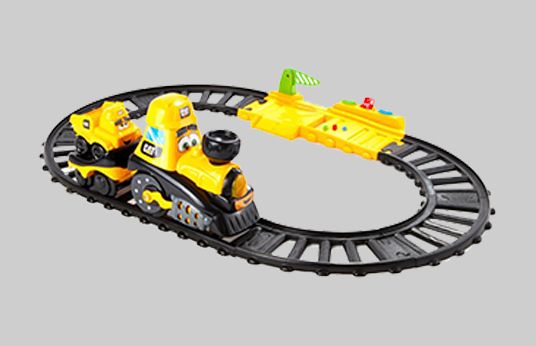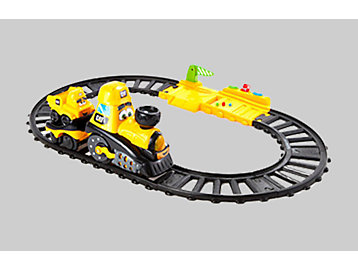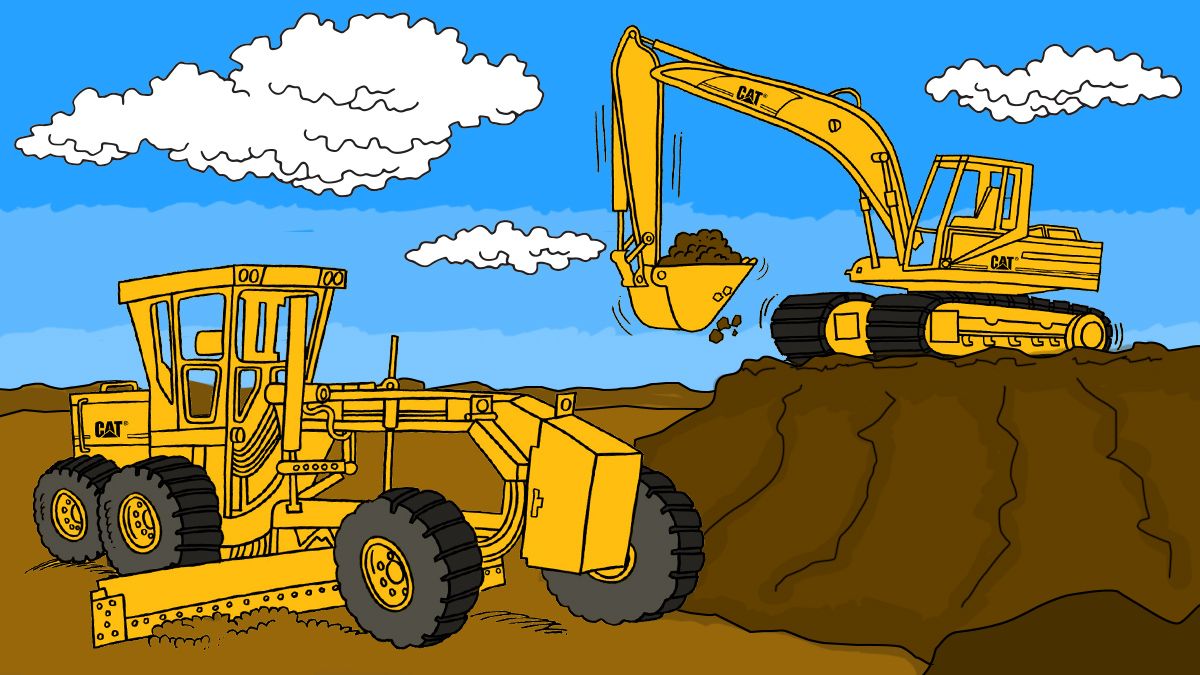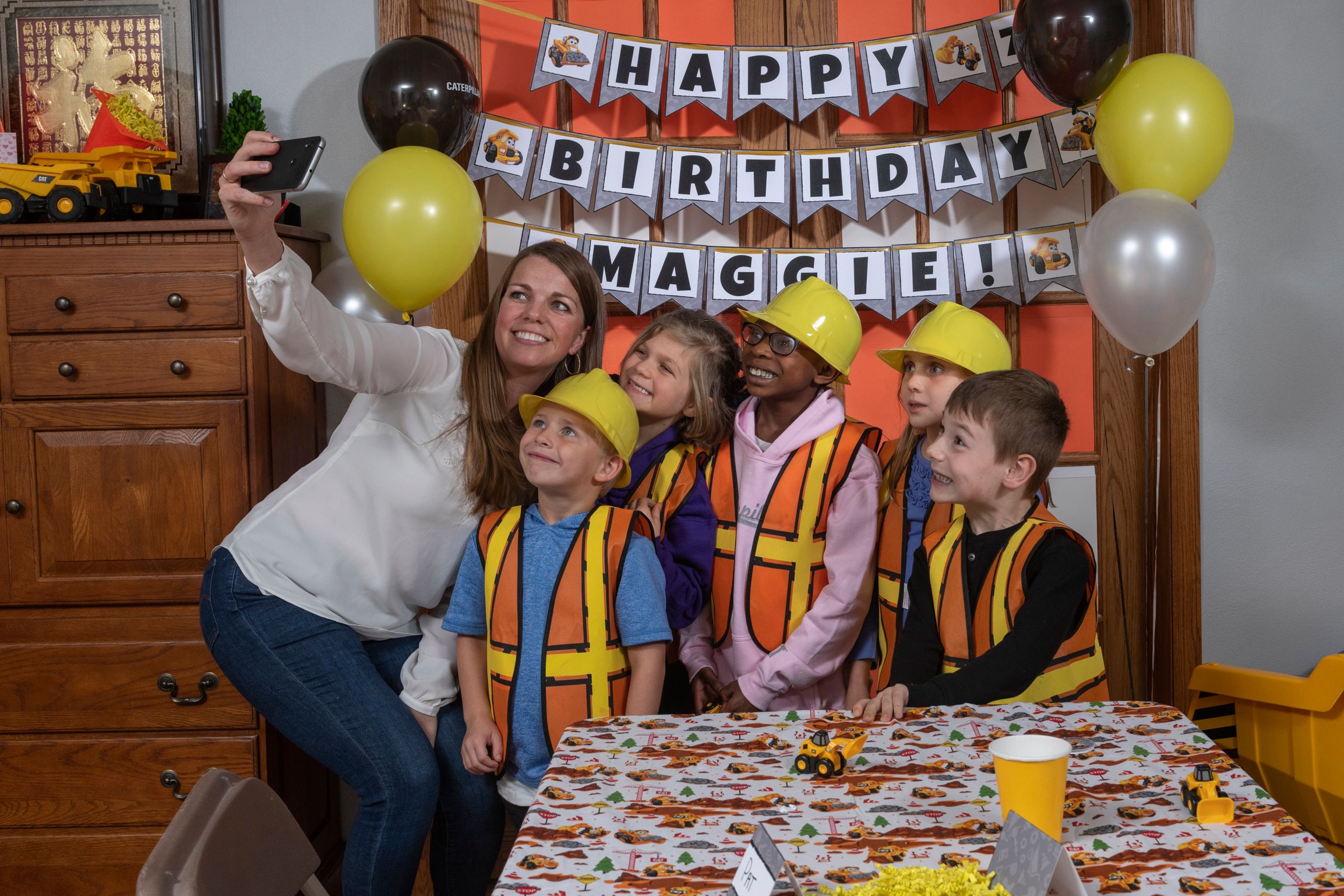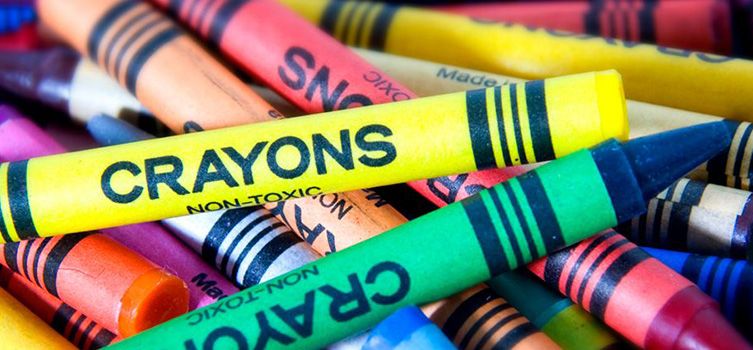

Sign In
Welcome! Sign In to personalize your Cat.com experience
If you already have an existing account with another Cat App, you can use the same account to sign in here
Register Now
One Account. All of Cat.
Your Caterpillar account is the single account you use to log in to select services and applications we offer. Shop for parts and machines online, manage your fleet, go mobile, and more.
Account Information
Site Settings
Security
Building a Construction Sensory Bin
Sensory bins help children in many ways – power them up with these fun construction toy ideas.
By Mario Passera, Contributor | Posted: July 13, 2022
“More digger trucks, please?" My toddler asks me this every time we drive past the small fleet of Cat® machines redoing our road. Someday, he’ll know that they’re backhoe loaders, compactors, and skid steers.
They’re also a great opportunity for early learning and development.
Construction toys are great learning tools for boys and girls of any age. They promote creativity and brain development while providing a true-to-life play experience that kids love. This makes them an ideal “ingredient” in sensory bins.
What are sensory bins?
Sensory bins combine a variety of objects and materials in an open-topped container to help kids unlock their senses and imaginations.
“Sensory bins offer the perfect opportunity for imaginative play while learning play skills, academic skills, pre-academic skills—and more,” says Claire Heffron, a Pediatric Occupational Therapist and co-founder of theinspiredtreehouse.com, a popular online hub for child development resources.
As your child grows, there’ll always be new problems to solve and new concepts to build. “The beauty of sensory bins,” says Claire, “is that they capture the attention and interest of so many different age groups and offers benefits to all of them—from babies all the way up to teens.”
And if you’re the parent of a budding Cat connoisseurs, you can make a construction sensory bin by incorporating construction toys as the main attraction.
Claire Heffron
Occupational Therapist
The Inspired Treehouse
How do construction sensory bins benefit children?
Construction sensory bins have two jobs: Help kids have fun and help their brains form new connections in the process.
They can tap into your child’s fascination with construction equipment to help them develop some of the skills that sensory bins are famous for:
- Sensory awareness
- Problem solving
- Fine motor coordination and hand strength
- Social interactions
- Language skills
Here’s how to create sensory bins that are so enjoyable your child won’t even notice that they’re a learning tool:
1. Stimulate their senses
Sensory bins provide kids with a fun, imaginative way to explore each of their senses through a variety of different materials.
“For kids who are more reluctant to touch unfamiliar textures,” says Claire, “sensory bins can be a fun and non-threatening way to build tolerance to different touch experiences. They’re also great for kids who tend to always be touching or fidgeting with something, because sensory play gives them an appropriate way to fulfill this sensory need.”
In one sitting, a kid can play with crunchy, soft, and tacky stuff—and even the “weird” textures that are good for them to get used to (I’m talking to you, slimy and squishy stuff).
Color-coordinated activities can stimulate their sense of sight. And hearing can come into play with the sounds of scooping, pouring, stirring—or construction toys that make cool engine and hydraulic noises.
For little ones who like putting toys in their mouth, edible sensory bin ingredients like graham crackers or ground-up cookies can go right from an excavator bucket into their mouths. They can also taste things like rice or beans outside of structured mealtime… a no-pressure way of expanding their palette.
Sure, sensory bins can get messy, but it’s a contained mess… kind of like a real-world worksite.
Here’s some inspiration for a using edible materials that are perfect for a worksite, courtesy of @kindnesscastle on Instagram—and yeah, the sand is delicious:

2. Encourage problem solving
According to Swiss psychologist Jean Piaget, who was famous for his theories on childhood cognitive development, sensory play allows children aged 0-2 to learn cause and effect through a variety of real-world sensory experiences. Cause and effect are critical to developing problem solving skills.
Claire adds that giving kids the space to explore this in sensory bins can “help them gain the ability to solve their own problems without the help of a parent or other adult.”
You can help promote problem solving with sensory bins by incorporating fun challenges into the pretend scene and giving them a chance to experiment with different solutions.
Adding the element of construction play takes that to the next level. For example, needing to move Playdough “rocks” out of a sand pit and deciding what works better for that job a backhoe or a dozer?
When a kid can imagine that they’re a part of a real-world construction site, it motivates them to think critically to get the job done.
3. Focus on their fine motor (and life) skills
Construction toys in sensory bins are great for helping to develop fine motor skills like hand-eye coordination, hand strength, and dexterity. Common actions that can be performed with construction toys (things like scooping, pouring, pushing, pressing, and lifting) can all contribute to building motor skills.
According to Claire, it’s especially important to focus on these skills during the toddler and preschool years.
“There are tons of ways to work on hand strength, coordination, bilateral coordination, and in-hand manipulation skills when kids are playing in sensory bins,” says Claire. “Putting small objects into containers, using tongs to pick them up, opening and closing containers, grasping, scooping, stirring, pouring—these are all awesome fine-motor activities.”
My little guy uses the Cat Little Machines 5 pack from Funrise, which fit easily in sensory bins. These small, push-powered vehicles allow a child to control every move of some of their favorite Cat machines (well… digger trucks), posing booms and buckets just like they’ve seen the real machines doing.
Even a sensory setup as simple as this one from Cat fan @ollie.eats.world can hold your kid’s interest for hours, encouraging extended play that develops their motor skills through repetition.

4. Support their social skills
Often, imagination comes a lot easier to a child than teamwork does. But sensory bins are primed for practicing social skills with both peers and grown-ups alike.
“Tactile materials can provide just enough novelty to kids interested in pretend scenarios,” says Claire.
This can help kids who struggle to socialize by offering fresh takes on social play.
“A sensory bin is great for collaboration and teamwork,” Claire explains, “whether it’s filling up a bucket together using shovels or finding all of the hidden treasures as a team.”
With their open-ended style of play, sensory bins offer endless opportunities to work through a variety of new situations collaboratively.
Here are some of the important social skills that sensory bin play helps to develop and reenforce:
- Listening
- Cooperation
- Communication
- Sharing
- Taking turns
- Patience (yes, please!)
5. Coordinate their (and your) calm time
Socialization is important, but sometimes a kid might need some alone time to help them regroup mentally and emotionally.
“When kids play on their own,” says Claire, “they learn that they don’t need to rely on others to create fun for them. The more they do it, the more self-reliant they become!”
Sensory bins not only provide an opportunity for independent solo play, but they can also infuse it with calming sensory experiences.
While enjoying their alone time, the child can feel soothed by certain materials.
For example:
- Soft, light objects like feathers or silk ribbons, especially a big pile of them
- Things that have a little more weight to them and are comfortable to hold, such as marbles or smooth, dry beans
- Plain old water—my son finds his happy place pouring it back and forth from one dozer bucket to the another
More good news? This supports parents’ wellness, too. “Many parents and caregivers beat themselves up for not engaging and playing with their children every minute of the day,” says Claire. “But the truth is, no one can (or should) play with their kids all the time. We all need breaks throughout the day to relax and recharge.”
6. Lift their language development
When I first started making sensory bins for my son, I had no idea how much they could help with language development. But I happily discovered that this aspect of them came naturally as I interacted with my son while he was playing in the bin.
Language skills can flourish when a kid learns to make real-time connections between words and concepts you share with them. For example, you can point out that “dirt hills” made out of cornmeal feel “gritty,” or that little buckets of bubble-bath water (for “washing the digger trucks”) feel “foamy.”
Construction sensory bins also give kids opportunities to talk through what they’re doing with the objects that are in the bin:
- Describing what they’re experiencing
- Explaining the steps they’re taking to accomplish a goal
- Making up stories about what’s happening in the world of their bin.
To encourage language development, consider a sensory bin that combines multiple loose materials, Cat Little Machines, and miniature construction signs (could even be handmade) to recreate road-work settings. Your kid can practice their vocab as they describe the different work scenarios they’re playing out.

How to Build a Construction Sensory Bin for Kids
With sensory bins, there’s no limit to the combination of ingredients that can go in them. Pretty much anything that fits inside the bin can be a part of the experience. As your child develops, you can experiment with new materials. “For example,” says Claire, “parents can introduce babies to simple water play and other taste-safe sensory bins (with close supervision), while other sensory bins like dry rice or kinetic sand may be appealing to older kids.”
Here are the three steps for creating a construction-themed sensory bin:
1. Start with a container
This construction site is sure to get a little messy, so start with a container (but one that a child can easily reach into). Storage containers with lids are handy if you want to save your creation to play with again. Children’s water tables are a great option for outdoor play.
Containers:
- Storage bins (the long ones that slide under beds are perfect for us)
- Buckets
- Food storage containers
- Baking dishes
- Children’s’ water tables
2. Add a filler
Moving material is one of the main jobs on a construction site. Using unique textures as sensory bin fillers can help stimulate a child’s’ senses and keep them engaged in their construction play for longer.
When choosing your construction sensory bin materials, consider the child’s age and how much supervision they’ll receive while playing. Edible fillers, for example, are ideal for toddlers who may put items in their mouth.
Our favorite fillers for construction sensory bins include graham cracker crumbs, corn meal, beans and dry peas. They can act as dirt, sand, and rocks for your construction site. As shown in this Instagram post from @learnwithlily, multiple fillers can be combined in one bin.

Here are some great sensory bin filler materials to consider:
Non-Edible Fillers
- Buttons
- Building blocks
- Cotton balls
- Foam chunks
- Kidfetti
- Pom Pom balls
- Ribbon curls
- Water
- Water beads
Edible Fillers
- Beans (kidney, lima, black)
- Corn meal
- Chickpeas
- Cooked pasta
- Dry pasta
- Graham cracker crumbs
- Ground-up cookies
- Cereal
- Jellybeans
- Marshmallows
- Pudding
- Rice (white, brown, rainbow)
- Split peas
3. Bring on the tools
Just like a construction site, you’ll need tools for scooping, dumping, pouring and filling. A fleet of Cat toys will get the job done. Other options include funnels, measuring cups, spoons and tongs.
Tools:
- Construction toys (we’re partial to Cat Toys, believe it or not)
- Empty toilet paper or paper towel tubes
- Funnels
- Measuring cups
- Potato mashers
- Rubber cupcake liners
- Sand shovels
- Sifters
- Spoons
- Sponges
- Tongs
- Watering cans
- Whisks
The proof is in the pudding
Back at our house, construction toys have been a game changer for our sensory bins. Let’s just say that when a kid gets to scoop up loose soil in a wheel loader toy—and the loose soil is actually sugar-free chocolate pudding with crumbled graham crackers—well, it’s a good thing for them.
We’re always thinking up new ideas for these tiny imaginary work sites, often with our child’s input.
What about you? Share your construction sensory bin ideas with us on Facebook and Instagram using @CatToysOfficial.

Mario Passera
Contributor
Mario is living the dream working as a writer and brand storyteller for one of the most iconic and impactful companies in the world, Caterpillar. Raised in the Motor City (Detroit, Michigan), he appreciates solidly built, well-engineered vehicles and enjoys sharing his passion for classic cars and modern Cat machines with his equally enthusiastic wife and son.
Related Stories
-
Sending a Cat® Rugged Smartphone into Space
When university students wanted to send a phone into space, one Cat licensee knew it would take a tough phone to handle the pressure. See why they chose a Cat S62 Pro.
Learn More -
Activity Pages: All the Fun, Without the Dirt!
Our printable activity pages have all your kid’s favorite construction equipment – excavators, trucks & more! Find puzzles, coloring & other educational materials.
Learn More -
Birthday Party Printables
Check out our party printables for the perfect Caterpillar themed or construction birthday! Includes banners, cupcake toppers, selfie props, a game, and more.
Learn More -
Cat® Equipment Coloring Pages
No matter what your favorite Cat® equipment is, we’ve got a coloring page for you and your kids. Check out our popular tractor, trucks and excavator coloring pages, plus more!
Learn More
